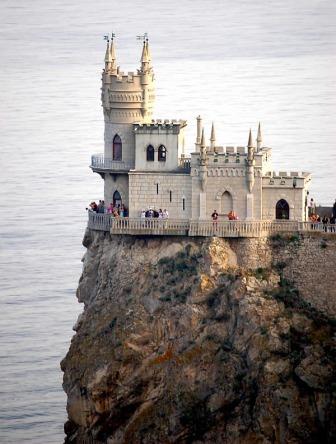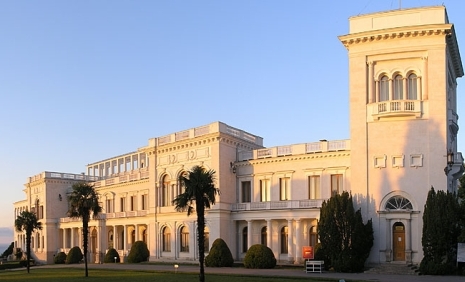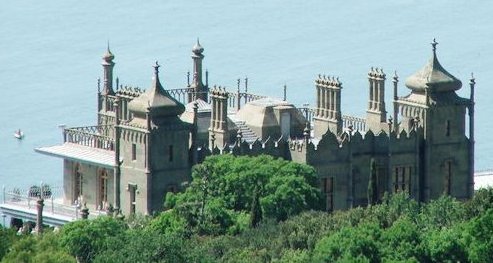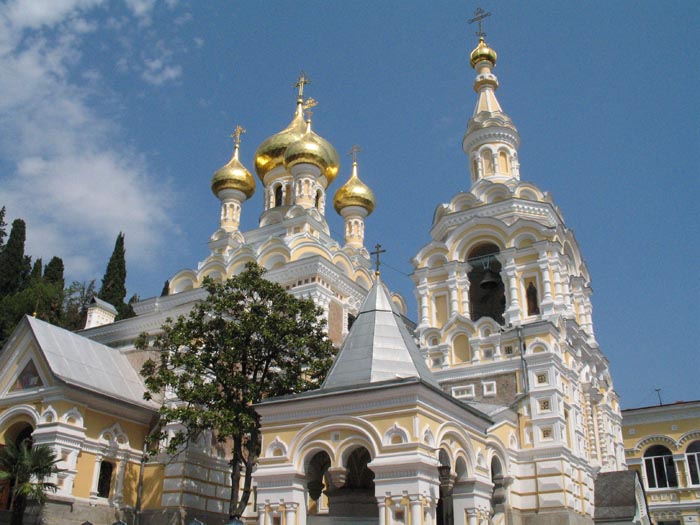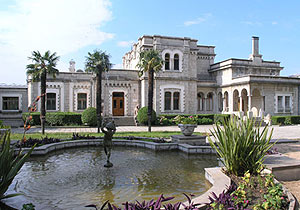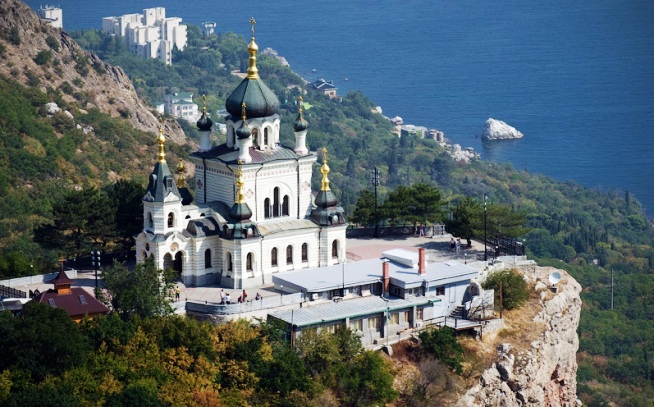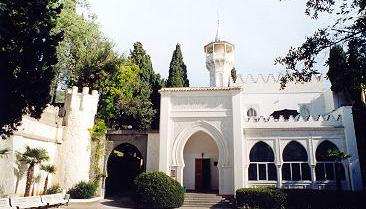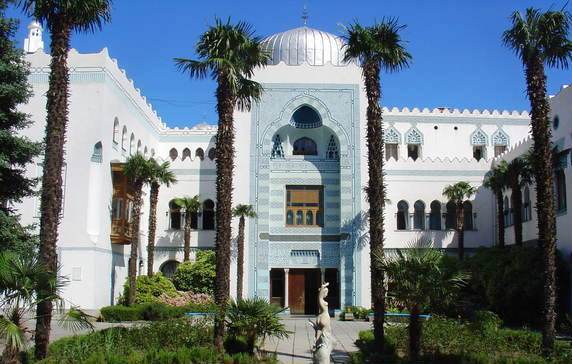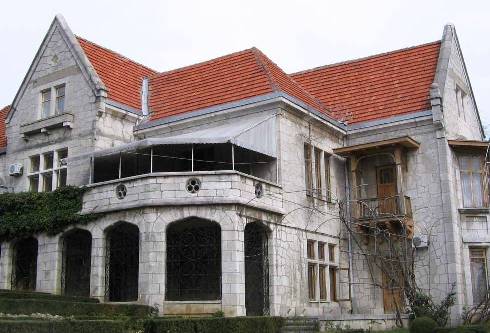Tul'chyn District
Picturesque Tulchyn district is the land of our courageous ancestors, the land breathing history and preserving its own customs and traditions. Tulchyn district lives its present life striving for future growth, cultural and industrial development. Tulchyn is homeland for many bright artists and intellectuals, known far beyond the region.
Tulchyn district is located in the south-eastern part of the Vinnytsia region, physically and geographically belonging to forest-steppe zone of the southern part of Podillyan plateau, lying along the rivers Pivdennyi Bug and Silnytsia.
The region is known for its 15 natural preserves and wildlife areas, with total surface exceeding one thousand hectares. Most important botanic and landscape preserves of local significance include picturesque reserves and canyons «Dranka», «Dzerivka», «Gora Dubyna», «Bereziv Iar», «Prybuzkyi», «Marusync», where rare species of trees and herbs are preserved. «Fedkivske» wildlife area preserves flora and fauna typical for marches and ponds, and includes nesting sites of marsh birds. Natural «Kovaleva» complex, lying on the hills of nameless stream, impresses visitors with rare flora and fauna. Picturesque «Sophora laponska» in Tulchyn Public Garden, near the Center for Children and Youth, is also protected by law as a complex representing rare and precious species of trees (Sophora japonica). Tulchyn can also boast of its own ornithological preserve.
The city, peacefully lying between the two hills, amidst the vivid nature, is named Tulchyn. Climbing up either of the hills, you'll enjoy the scene of this Ukrainian city and its suburbs: green necklace of the forests, parks and public gardens, blue surface of the ponds, and ancient churches and houses among them. «Tulchyn, immersed in the time-honored history...», — exclaimed the Ukrainian poet Pavlo Tychyna, after having visited the city.
First written notice of Tulchyn refers to the 10th of May 1607, where the city is mentioned as Nestarvar. Some historical documents narrate the events occurred at the beginning of the 15th century in fortified settlement, referred to under varying names, paronyms of the current suburb of Tulchyn, the village Nestervarka.
Tulchyn's great history began after 1609, when Polish Magnate Valentiy Kalinovski came into ownership over the city, and ordered to shift initial city's downtown from the northern bank of the Silnytsia river (eurrent loeation of Nestervarka village) to the Tulehynka river. When his son Adam inherited Tulchyn in 1630, he caused to build a fairly fortified stronghold and the monastery.
Adam Kalinovski patronized Dominiean order, donating significant amounts for construction of Dominiean monasteries. Dominican Church was built in Tulchyn during his rule.
After extinction of Kalinovski family Tulchyn falls into the ownership of their next of kin, Potocki (1726), one of the most powerful and wealthy noble families of Poland.
In 1726 Tulchyn became residence of the Polish Magnate Stanislaw Potocki, and in 1775 passed to his nephew son, Stanislaw Felix Szczesny Potocki.
From that moment provincial city Tulchyn turned into important center of Ukrainian and European history. The transformation occurred in 1775, when Stanislaw Felix Szczesny Potocki moved to Tulchyn and started enthusiastically city development, being inspired by his beloved Sophia, beautiful woman of Greek origin, for whom the Count subsequently built the famous Sofiivka Park (Uman, Ukraine).
Stanislaw Felix Szczesny Potocki transforms small town to a fairly developed city, with powerful industry and European culture.
In 17S2 the Count built in Tulchyn a majestic Palace ensemble, a legendary uPodiliyan Versailles)), the wonder of Europe and the pearl of Podillya, challenging best European palaces built up to that time. To realize that ambitious project were famous architects Ludwig Met/.el and Lacroix (France).
English park and landscape designer Miller developed around the Palace the marvelous park «Khoroshe», featured by local and exotic species of shrubs and trees, by pergolas, fountains, ponds, flowerbeds, and marble statues created by the best artists of that period.
History of Tulchyn has had very tight liaisons with France. During Potocki era his Palace in Tulchyn hosted members of the most powerful aristocratic French families, like Prince de Polignac, Prime Minister of France at the times of Louis XV, King of France, Shuasellier, Count Pontmarten.
Potocki's descendants were friends with the most outstanding personalities of Europe, like Honore de Balzac, Chopin, Slovatski, Guy de Maupassant, etc.
Other than with France, Tulchyn is associated with historical events and personalities of Germany, due to the presence in this city of the Headquarters of the Second Russian Army, under the lead of the Prince Witgenshtein, of German origins. His aide-de-camp, also of German origins, P. Pestel, instituted in Tulchyn the Southern Society of Dekabrists, whose most active members drew up an outstanding document. Democracy Constitution «Russian Truth» ("Russkaya Pravda").
One of Tulchyn's streets bears the name of Pestel. Local community erected the monument to his honor. During Koliivshchyna (1768) Tulchyn hosted Headquarters of Russian Army, whose units were brought up here to support Polish gentry to fight Haidamaks. Haidamaks leaders, I. Gonta and M. Zalizniak, were captured in a villainous way. They were kept in the cells of local Monastery for a while, awaiting until their fate would be decided ... The outstanding Russian General Alexander Suvorov lived in Tulchyn region in the period from March 1796 through March 1797, and it was Tulchyn land where he wrote his brilliant work «The Art of Victory», with the practical purpose to teach his soldiers, his powerful heroes, to outdo and defeat enemies. Remains of «Prazhka» training fortifications can be still viewed in Tulchyn region, along with the wells, made by Suvorov's soldiers near Tymanivka village, the oaks planted by them, and the houses, where the General lived. There is a monument to Suvorov in downtown area of Tulchyn, and one of the central streets bears his name. Big history made in the small Tulchyn in 15th—19th centuries, attracted like magnet many outstanding personalities, famous scholars, writers, historians and public figures, who were coming here in search of the facts and historical eviden- ces, subsequently laid by them in the plots of their immortal literary and art pieces. Ivan Petrovych Kotliarevskyi, poet and playwright, one of the first classics of Ukrainian literature, author of «Eneida» and «Natalka-Poltavka», visited Tulchyn in 1806. Other classic of the national drama, I. Karpenko-Karyi, lived in Tulchyn while working on his big historical dramatic play «Sava Chalyi». Marko Vovchok, the great Ukrainian writer, in 1860 came to Tulchyn to collect and transcribe old Ukrainian folk songs. Tulchyn is associated with the names of the great Russian poet Alexander Pushkin and artist K. Ia. Reikhel. In 1856 Tulchyn hosted I. M. Soshenko, the big Ukrainian artists and friend of Taras Shevchenko. Soshenko masterly painted iconostasis of the Church in Nestervarka, and in Potocki Palace made a marvelous copy of the portrait of the Countess Sophia Potocka, painted by the brilliant Italian artist G. Lampi. Tulchyn also remembers K. V. Shyrotskyi visiting this glorious city. Shyrotskyi was a Podillya native, well-known art historian, collector of folk art pieces, exhibi- ted in Ukraine and overseas, author of essays analyzing T. Shevchenko literary heritage, scholar who was preparing edition of art history in two volumes. One of the most important events and personalities in the history of Tulchyn was the stay in this city of the great Ukrainian composer Mykola Leontovych at
the beginning of the last century. European audience called hun Ukrainian Bach, or Podillya Nightingale. The house where M. Leontovych lived was transformed into Museum, inau- gurated in W77. There is a majestic and, at the same time, moving monument to M. D. Leontovych and his music. The monument, recognizable symbol of Tulchyn, represents pillar made of the Ukrainian folk songs and tunes. The composer seems trying to recall something, in deep reflection, observing at the same time the life on the street, he walked so many times in the last days of his life. Tulchyn region (Mankivka village) gave to the world Anatoliy Svydnytskyi, a big writer and poet of historical genre, champion of revolutionary ideas promoted by Taras Shevchenko and Dekabrists. Tulchyn region inspired the whole pleiad of outstanding artists and writers, including Stanislaw Trembetski, one of the best Polish poets, teacher and prede- cessor of Adam Mickevich; G. Lampi, Italian artist, portraitist of royal families; Lacroix, outstanding French artist, mechanical engineer, chemist and architect; Jozef Kraszewski, well-known Polish writer, who left perfect belletristic descrip- tion of «Khoroshe» Park (1843). Later, in 20th century, Tulchyn was inspiring brilliant Ukrainian writers and poets P. Tychyna, M. Rylskyi, M. Bazhan. Fresh eye of the visitors, coming to Tulchyn for the first time, catch numerous cultural, historical and architectural attractions and relics, adding a unique touch to the city image. Majestic Palace ensemble of Potocki family, built in the Classical style, re- mains the most valuable part of the cultural and architectural heritage possessed by Tulchyn. In the heart of the city, on the quiet and green Kollontay street, you'll see an old building, a kind of a small palace with gallery, former mansion of Abaz family, known as the family of origin of Glikera, well-educated and wise lady, mother of Ukrainian writer Mykhailo Kotsiubynskyi. Dominican Church, rising above the neighboring buildings of the central street of the city, was built in Ukrainian-Polish Baroque style. It was conceived by architects as a diminutive replica of the famous St. Peter Church in Rome. Assumption Church, built in 1789 in Baroque style at cost of Potocki fami- ly, still can be seen not far from the Market square. This Church was visited by Emperors of Russia Alexander I and Nicholas I. Small mansion (1820), located not far from the Church, currently hosts Tulchyn Museum of Local History and Ethnography, in which evidences, artifacts, documents and relics concerning history, cultural development and ethnography of Tulchyn are collected and exhibited. In the 19,h century it was the Second Russian
Army's Officers Assembly building, surnamed by the people «Dekabrists House», because Dekabrists used to hold their meeting there indeed. Premises of the College of Veterinary Medicine, Subsidiary of the Vinnytsia Agrarian University, are one more tourist attraction of Tulchyn. Interesting is its history, as the building was constructed in 1815 by the captive French soldiers upon the order of Alexander I, the Russian Emperor. Among architectural «gems» of Tulchyn is worth of attention the former Gliklikh House (1912). Merchant Rozenfeld caused to construct the building for his daughter Julia, who married Gliklikh. Gliklikh himself was a merchant, who came to Tulchyn to trade timber, and settled his family there. The house was built in Art Nouveau style, and currently hosts the local Registry of Marriages. Non-finished house of Svarichevskyi, S. Potocka's personal lawyer, is one more «zest» of the local architecture. Former building of Diocesan College, where glorious M. D. Leontovych taught music and singing, also belongs to the cultural and architectural heritage of the city. Tulchyn and Tulchyn region possess big cultural, historical and architectural heritage, and impressive number of folk customs and traditions. Tulchyn region is also a perfect choice for those who wish to relax close to nature and enjoy mar- velous local scenery, to taste authentic Ukrainian cuisine. Visiting Pechera village is a must when on trip through Tulchyn region. First of all, it's worth of it due to the picturesque landscape, characteristic to the vast plateau on the banks of the Pivdennyi Bug River, on which the village is located. Secondly, the village has its own tourist attractions. In 1762 the wooden Church of Nativity of Virgin Mary was built next to the ancient settlement (currently protected by law as an important architectural relic). Potocki family had chosen this place to build the Catholic Church-Mausoleum, in Romanesque architectural style. Mausoleum became a real masterpiece, created by Vladyslav Gorodetskyi, an architect of genius, known due to his original archi- tectural solutions. In sepulchral vault of Mausoleum there are several tombs of the members of aristocratic Potocki family. Wonderful park was laid on the rocks extending to the Pivdennyi Bug River. The river has numerous rapids at this level, and the park is featured by over 60 types and species of trees and shrubs, and by unique alley consisting of 250-years old linden trees. One more Pechera's attraction are river rapids. Rafting lovers from all over Ukraine come to Pechera every year in April—May, when the water is high, to practice this extreme sport on their catamarans and kayaks. Quieter visitors with families come here to relax in summer, when the water is not so high any more, and huge boulders appear above the surface, and the stream is creating natural Jacuzzi.
If departing form Pechera you take highway to Mogyliv, you'll get to aneient Shpykiv, located on the hills along the small Shpykivka River. At the end of the IS"' century the Magnates Sweikowski built fortified Palace, which resisted time and can be seen in the village, at the foot of the hill. When on trip through Tulchyn region, visiting Kryshchyntsi village is a must. Kryshchyntsi is known as a traditional center of pottery-making in the region. I bus, it's no wonder that a big talent of Ivan Tarasovych Gonchar grew up here, the talent of unmatched master of Ukrainian folk toy, founder of folk small sculpture tradition. Tulchyn traditionally can boast of skilful craftsmen, masters of woodcutting, embroidery, wickerwork (reed and cane) and Lgg-painting. Visiting traditional lairs, held during holidays and festivities, actions and exhibitions, you can enjoy the beautiful pieces of folk arts and crafts and even purchase them. Among such festivities are International Women Day, Victory Day, Ivana Kupala (Midsummer Day), Independence Day, Tulchyn Anniversary Day, and other Municipalities an- niversary days. Authentic amateur folk groups are another pride of Tulchyn region. Small Tymanivka village attracts people keen on history, as Tymanivka is the only village in Ukraine possessing three museums. One of the major exhibitions of the Museum of Local History and Kthnography is dedicated to the labor achievements of Tymanivka residents, as local collective farm enterprise was known all over the USSR, also due to the efforts of the ta- lented manager Pylyp Oleksiyovych Zheliuk, twice awarded the title of the Hero of Socialist Labor. P. O. Zheliuk and his family are held in big respect by the lo- cal community, as the family of hard-workers, of talented farmers, of honest and generous people. Tymanivka was many times visited by the Russian General Alexander Suvorov. Local community preserved small stone house, where Filed Marshal Suvorov stayed, composing his «Art of Victory». Kynashiv village, an eastern suburb of Tulchyn, was another place where Suvorov stayed for a while. He lived in the house of local medical assistant Ivan Dekhtiar in summer 1796. Dekhtiar's house was a convenient place to observe military drills. In 1900, for 100 anniversary of Suvorov death, fans of the great Russian General and his military talent, erected commemorative plaque, narra- ting the chronicles of Suvorov's stay in the village. Several rose bushes, planted at the same tune, are still in blossom in summer. Kynaslm residents cleaned and arranged the well, and put a small pergola made of live vine, and installed a plate narrating about Suvorov's stay in the village. Unique outdoor Museum «Kozatska Levada» (Cossacks Coaching Inn) was inaugurated in Kynashiv under the auspices of the local artist Mykhailo Dovgan.
Visitors have a rare opportunity to see and toueh memorabilities belonging to local history, to visit local art exhibitions, and to simply relax close to nature. \erbove village, lying in the vast valley, is famous for the monument to the General L D. Cheniiakhivskyi, twice Hero of the Soviet Union. The monument stands on the central square, close to local school, to remind the new generations about his heroic deed. Kyrnasivka village history is associated with Dekabrists movement, as mem- bers of Southern Dekabrists Society held meetings here, reading and discussing «Russian Truth» (Russkaya Pravda). Kleban' village is located amidst the gardens, at the confluence of the Silnytsia and Kilchivka Rivers, tributaries of Pivdennyi Bug. There is a big pond, measuring 133 ha, in the center of the village. Ilka River flows into the Silnytsia downward the pond. In the 19th century Kleban' was the place of location of the Second Russian Army training battalion, under the command of the colonel R V. Abramov, mem- ber of Dekabrists Society. Dekabrists often held their meetings in Kleban'. Some historian believe that one copy of Pestel's «Russian Truth» (Russkaya Pravda) was hidden on the territory of the village. Kleban' is famous for hosting G. T. Tantsiura in the period 1934-1944, when he worked in the local school. Tantsiura was a Ukrainian folk songs collector of international fame. Fertile soils, gorgeous gardens in blossom, water wells and blue ponds — a real natural wealth was given to these lands! And you can see and enjoy this wealth, along with authentic folk customs and traditions, simply visiting Tulchyn region. This land welcomes you, ready to generously share its richness and potential, its projects and initiatives, striving for better future.
Tourist Vinnychyna. Ethnography Guide. Comp. of ukr. text O. Kizian

